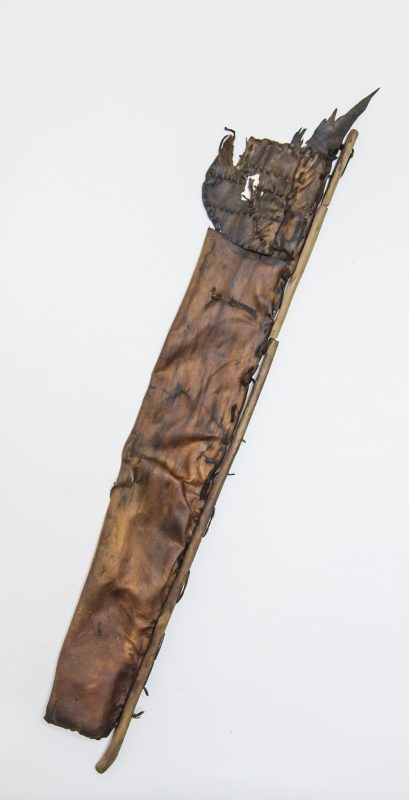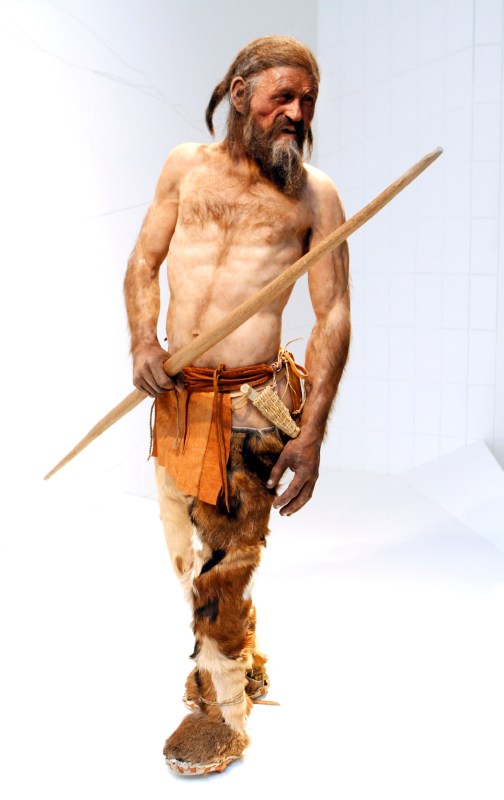
Back in 1991, a frozen, 5,300-year-old mummy was found in the Ötztal Alps. He was named “Ötzi” upon discovery, and is currently Europe’s oldest person known to have been mummified by natural means. Ötzi drew scientific attention for his bizarre amount of medical problems, including hardening arteries and Lyme disease. Happily, he now has a more positive claim to fame: he was seriously stylish.
Using genetic sequencing technology, a research team finally identified the garments Ötzi was wearing when he was found. Due to their degraded condition, this was no easy task, but the team was able to enrich the existing DNA information on his clothing to determine the species of animals responsible his fur and leather garments.
The Iceman’s loincloth (South Tyrol Museum of Archaeology/Harald Wisthaler)
Turns out that Ötzi was quite the fashion plate. Of the six clothing items analyzed, five different animal sources were identified. Most of his base clothing was made from a mixture of sheep, goat, and cow materials, while his hat came from the fur of a brown bear. His arrow quiver was produced from roe deer, which he likely hunted himself or scavenged.

Not only that, Ötzi selected his wardrobe carefully, picking items based on their composition and intended use. “We can infer that ancient populations made considered choices when choosing raw material for manufacture,” researcher Niall O’Sullivan of the Institute for Mummies and the Iceman told Archaeology.org, citing the example that “goat skin may have had a special characteristic such as flexibility that made it optimal for leggings.”
This article appeared in an InsideHook newsletter. Sign up for free to get more on travel, wellness, style, drinking, and culture.




















